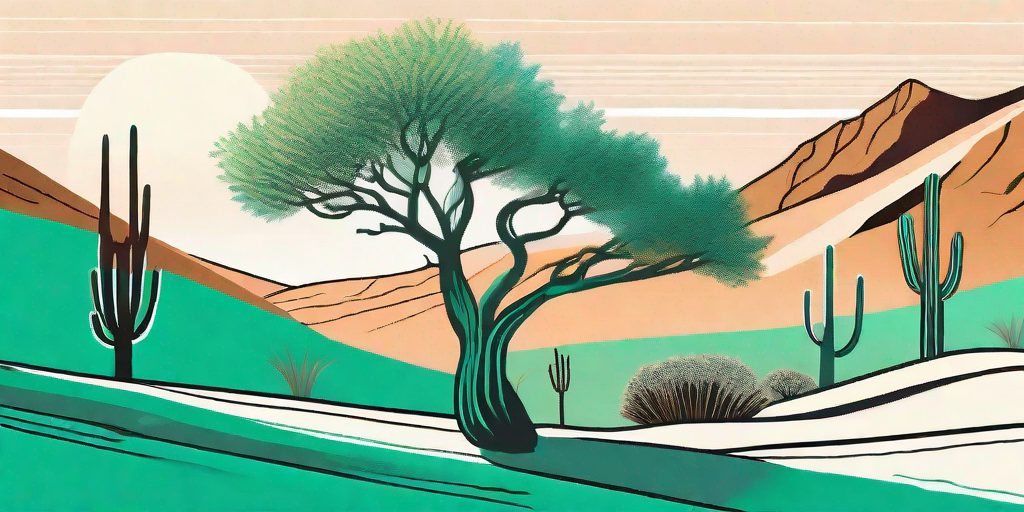
Deserts are often depicted as barren and lifeless landscapes, but that's far from the truth. In fact, these seemingly inhospitable environments are home to a variety of trees that are as beautiful as they are resilient. These desert dwellers have adapted to thrive in harsh conditions, and their unique features contribute to the stunning beauty of desert landscapes. So, let's embark on an adventure to discover the hidden beauty of desert trees.
The Marvelous Adaptations of Desert Trees
Desert trees are the ultimate survivors. They have evolved a range of strategies to withstand the extreme heat, limited water supply, and sandy soil. Some of these adaptations are visible to the naked eye, while others are hidden beneath the surface.
One of the most common adaptations is the development of deep root systems. These roots can reach down to depths of up to 100 feet in search of water. Some trees, like the Mesquite, have both deep and wide-spreading roots to maximize water absorption.
Another adaptation is the ability to store water. The Baobab tree, for instance, can store up to 32,000 gallons of water in its swollen trunk. This allows it to survive long periods of drought.
Desert trees also have unique features that reduce water loss. They have small, thick leaves or needles to minimize evaporation. Some trees, like the Palo Verde, have green bark to carry out photosynthesis when leaves are shed to conserve water.
Meet the Most Stunning Desert Tree Species
Now that we've covered the amazing adaptations of desert trees, let's meet some of the most stunning species. Each of these trees adds a unique touch to the desert landscape.
The Joshua Tree
The Joshua Tree, named by Mormon settlers who thought the tree's outstretched branches resembled the biblical figure Joshua reaching his hands up to the sky, is a symbol of the Mojave Desert. Its twisted, spiky appearance gives it a prehistoric look.
Joshua Trees can grow up to 40 feet tall and live for hundreds of years. They bloom in spring, producing beautiful clusters of creamy white flowers.
The Palo Verde
The Palo Verde, or "green stick," is a small tree native to the Sonoran Desert. It's known for its green bark, which photosynthesizes in the absence of leaves.
In spring, the Palo Verde bursts into a brilliant display of yellow flowers, creating a stunning contrast against the desert landscape.
The Baobab Tree
The Baobab tree, also known as the "Tree of Life," is native to the deserts of Africa. Its massive, water-storing trunk and spindly branches give it a unique, upside-down appearance.
Baobabs can live for thousands of years, and their trunks can reach diameters of up to 30 feet. They produce large, nutritious fruits that are a vital food source for many desert animals.
FAQs
Can desert trees be grown in other climates?
Many desert trees can be grown in other climates, provided they are given the right care. They generally prefer full sun and well-drained soil. Some species, like the Joshua Tree, are hardy and can tolerate cold temperatures.
Are desert trees good for landscaping?
Desert trees can make excellent additions to landscapes, especially in dry regions. They are low-maintenance, drought-tolerant, and their unique features can add a touch of exotic beauty to any garden.
Do desert trees provide habitat for wildlife?
Yes, desert trees provide vital habitat for a variety of wildlife. Birds nest in their branches, animals seek shade under their canopies, and many species feed on their flowers, leaves, and fruits.
Conclusion
Desert trees are truly remarkable. They not only survive but thrive in some of the harshest conditions on Earth. Their resilience, combined with their unique beauty, makes them a fascinating subject of study.
So, the next time you find yourself in a desert, take a moment to appreciate these amazing trees. Their hidden beauty is a testament to the wonders of nature and the power of adaptation.















